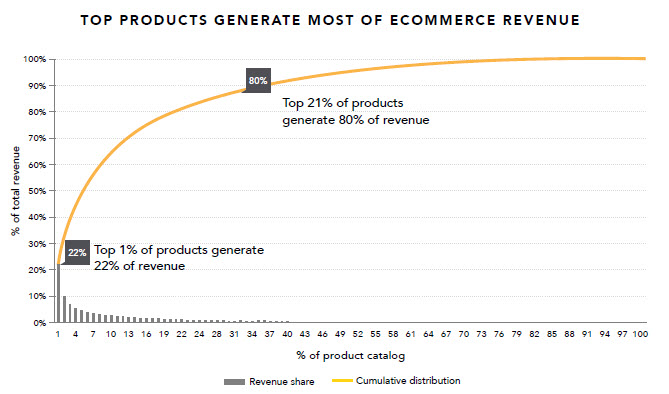By Rick Kenney, Head of Consumer Insights, Salesforce
About a year ago, I met with a number of retail leaders across the globe, testing a few research hypotheses. I’d slip a few topics into conversation with retail executives to get a sense of their stance on everything from social and mobile to bots and buzzwords (and beyond). On one occasion, I struck a nerve:
Me: “What do you think about fast fashion?”
Fashion Exec: “We are NOT fast fashion.” (Said in a visceral, disgruntled tone.)
Clearly, the phrase “fast fashion” comes with a lot of baggage for many in the fashion and retail industries. However, the concept of offering an ever-changing product catalog with a steady stream of product launches is driving success, and it’s now sweeping across retail.
Unfortunately, the negative association of fast fashion with cheap and disposable goods has clouded the view of many retailers — to such an extent that it’s created a roadblock for transformation that fails to put shoppers first (which should be the goal of every retail brand today).
So, it’s about time the retail industry came up with a new, broader way to think about “fast fashion” — something that doesn’t immediately imply inexpensive, throwaway clothes. Our suggestion: “fresh retail.”
Among the findings in Salesforce’s recent Shopper-First Retailing report, “Make It Fresh” is my favourite shopper-first mandate to emerge. In today’s hyper-competitive and increasingly marketplace-dominated retail environment, it was found that retailers and brands have a unique advantage against marketplaces — as long as they can continue making the shopper relationship fresh through relevant, unique, and enticing new products. That’s how they can win and retain shoppers.
Within the “Make it Fresh” theme, here are a few important insights we uncovered.
Focus on New Products
Shoppers have spoken. They want new products and new experiences — all the time. More than two-thirds (69%) of shoppers expect to see new merchandise whenever they visit a site or a store.
A brand that does this well is Uniqlo. As one of the brands explored as part of the “mystery shopping expedition” component of this research, Salesforce was quick to notice how an entire floor of Uniqlo’s New York City flagship store is dedicated to seasonal and quick-turn inventory. Doing so allows Uniqlo to give shoppers a reason to come back by putting fresh, new products front-and-centre within the store.
Focus on Top Products
The power of fresh retail is most clearly on display at the very top of your product catalog, where the best-selling products are constantly changing. Across the millions of Salesforce Commerce Cloud site visits analysed, it was found that 59% of the top 5% of best-selling products change monthly. And, those top 5% of products generate an astounding 48% of e-commerce revenue.
Clearly, finding hits — products that excite shoppers — is critical to retail success. Those retailers that rely too heavily on stale, evergreen products and don’t constantly produce new, compelling products will struggle.

Focus on Urgency
Retail trends come and go; each one has left its mark. The flash sale model is a great example of this. Although there are fewer flash sale retailers today than even just a few years ago, those retailers changed the industry as whole by redefining the concept of urgency. They basically taught shoppers that it’s now acceptable to sell out products on a first-come, first-served basis.
Look at the websites of some of today’s hottest brands, and you’ll see a product grid that includes sold-out products. This is a solid strategy for driving demand, and Puma is doing this masterfully. The lifestyle footwear brand has found success with compelling collaborations, including a Fenty collection with Rihanna and unique colorways with M*A*C Cosmetics.
Latecomers to those collection pages will see a gray-scaled set of products marked “SOLD OUT,” interspersed alongside available items. This e-commerce strategy essentially teases the shopper with a “you should have visited earlier” message. Doing so adds to the brand’s desirability and even increases demand of what remains. Fewer available options can actually increase conversion.
Fresh retail is about much more than a quick-to-market product strategy. It piques interest across brick and mortar, e-commerce, and marketing channels to keep shoppers coming back again and again. Offering unique and constantly fresh products and experiences is the key differentiator in the battle for shopper attention — particularly against the looming threat of marketplaces.
Want to learn how you can build a fresh retail strategy rooted in best-in-class brand experiences using the Salesforce Commerce Cloud, email us at asklava@lavaprotocols.com or call us at 03-7885 9720.
Article first appeared on the Salesforce blog.
Lava is an authorised Salesforce Partner in Malaysia and has more than a decade of experience in cloud solutions which includes marketing automation, CRM implementation, change management, and consultation. We pride ourselves in not just being a CRM partner but in also understanding the needs of our customers and taking their business to the next level.